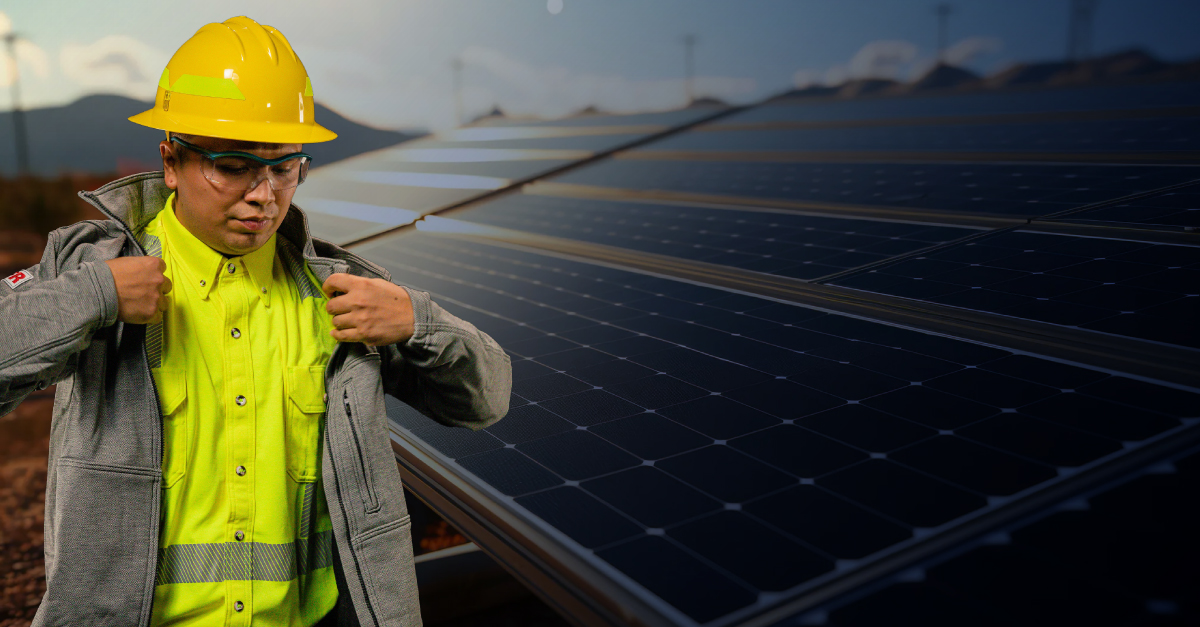The chip industry is at the heart of today’s tech-driven world, powering everything from smartphones to supercomputers. But behind the scenes, making these chips involves complex processes and plenty of chemicals—creating risks for workers. That’s why Lakeland’s chemical protective clothing is here, offering the safety they need to stay protected on the job
So, what does chip manufacturing look like?
Let’s start with Wafer fabrication, a crucial step in chip manufacturing. During the mechanical grinding stage, aluminum oxide particles are used to polish wafers. This process generates dust that poses risks to the respiratory system and the skin of operators. Lakeland’s MicroMax protective clothing provides an effective barrier, preventing dust ingress and keeping operators safe.
When protecting against corrosive chemicals, the etching and cleaning processes utilize strong acids and alkalis, such as nitric acid, hydrofluoric acid, acetic acid, sulfuric acid, and sodium hydroxide. These chemicals are highly corrosive, capable of causing severe burns and life-threatening injuries. Lakeland’s ChemMax 2 chemical protective suits, featuring Dow Chemical’s Saranex 23P barrier film laminated to high-strength nonwoven fabric, deliver strong resistance against chemical corrosion and prevent penetration, ensuring operator safety.
The chemical mechanical wafer polishing process introduces silica powder, a fine and hazardous dust composed of silicon dioxide (SiO2), which is derived from the grinding of silicate minerals. Our MicroMax NS protective clothing, provides a high-quality microporous outer membrane and an inner layer of spunbond polypropylene, providing excellent dust protection, safegaurding workers from exposure to silica powder.
Although the chemicals used in the cleaning process, such as ammonia water, hydrogen peroxide, and deionized water, are relatively mild, continuous contact can result in long-term adverse health consequences. Lakeland’s ChemMax chemical protective clothing uses a range of barrier fabrics and features stitched and taped sealed seams to effectively prevent contact with chemicals and ensure operator safety.
The core processes of chip manufacturing, such as thin film preparation, photolithography, development, etching, and photoresist removal, also frequently use various hazardous chemicals. In the development process, KOH, NaOH, TMAH, etc. are used to remove the photoresist. In the etching process, HF gas and NaOH are used to etch the films. In the cleaning process, H2SO4, HCl, H2O2, and ammonia water are used to remove the photoresist. While these chemicals play their respective roles in the manufacturing process, they also bring great dangers to the working environment.
In the semiconductor manufacturing process, about 50 different types of gases are used in approximately 450 processes. With the introduction of new technologies such as copper interconnect technology, the types and quantities of gases are constantly changing, including common gases and specialty gases such as chlorine gas, hydrogen chloride, and hydrofluoric acid. Some of these gases are toxic, some are highly corrosive, and some are flammable and explosive. The slightest negligence may lead to serious accidents.
In the critical processes of chemical storage, unloading, and transfer, Lakeland’s MicroMax and ChemMax protective clothing, together with professional dust-proof and chemical-proof accessories and chemical-proof boots, form an impeccable protection ensemble, eliminating the contact of workers with various dangerous chemicals and dust, and effectively avoiding health problems caused by long-term or short-term exposure.
At the critical moment of emergency response, once a chemical leakage or accident occurs, Lakeland’s ICP640, ICP645A, ChemMax 3 series protective clothing can provide reliable protection, effectively blocking the hazards of various dangerous chemicals, building a solid safety barrier for emergency rescue personnel, winning precious rescue time, and minimizing the harm to personnel.
In conclusion, given the special manufacturing process and the extensive use of chemicals in the chip industry, Lakeland chemical protective clothing not only ensures the life, health, and safety of workers but also lays a solid foundation for the stable and efficient production of the chip industry. As the chip technology continually develops Lakeland’s chemical protective clothing will innovate and optimize to meet the challenges presented by new chemicals and process environments, leading the way with excellence in worker safety.
The table below shows the permeation test Normalized Breakthrough on Lakeland Chemical protective clothing fabrics for many of the chemicals used in the chip manufacturing industry.
| Chemical | Concentration % | ChemMax1(min) | ChemMax2(min) | ChemMax3(min) | ChemMax4 Plus(min) | ICP(min) |
| HF | 70%-99% | 297(48%) | >480(70%) | >480(50%) | >480(99%) | >480(99%) |
| HCl | 37% | 250 | >480 | >480 | >480 | >480 |
| HCl | 99% | Imm | 410 | >480 | >480 | >480 |
| H2SO4 | 96%-98% | >480(96%) | >480(96%) | >480(97%) | >480(98%) | >480 |
| HPO3 | 85% | >480 | >480 | >480 | >480 | >480 |
| NaOH | 50% | >480 | >480 | >480 | >480 | >480 |
| NH4OH | 29% | N/A | >480 | 120 | N/A | |
| KOH | 86% | >480 | N/A | N/A | >480 | >480 |
| TMAH | 25% | >480 | N/A | >480 | >480 | >480 |
| IPA | 99% | >480 | 51 | >480 | >480 | |
| Butyl acetate | >480 | |||||
| TCE | 99% | N/A | N/A | >480 | >480 | >480 |
| Acetone | 99% | >480 | >480 | >480 | >480 | >480 |
| Xylene | 99% | Imm | Imm | >480 | >480 | |
| CL2 | >480 | |||||
| CF4 | >480 | |||||
| BCl3 | >480 |

